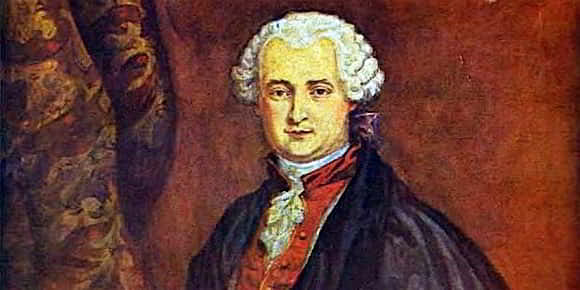orval graves
Another more popular formula came from one of the famous 20th-century alchemists Frater Orval Graves (who was Frater Albertus' first teacher). Graves was the first librarian of AMORC and instructor of alchemy in the RCUI (Rose Croix University International). He was also a Martinist of the highest rank. In an interview with Russell House, published in the Stone Magazine (No 18, Jan-Feb 1996), Graves mentions a lengthy and costly attempt by a Dutchman to acquire the formula. At the end of the article, Frater House gives the formula from the notes of RCUI classes. The formula reads:
- Senna - 2 grams
- Manna - 15 grams (note: this is a gummy product from the European flowering ash tree, Fraxinus ornus)
- Anise - 1 gram (fennel flowers) "or elders" is handwritten
- Elder - 4 grams
While one recipe called for the use of 4 ingredients, Frater Graves remarks that all 5 should be used. Frater Graves also mentions in the article that when Manna was difficult to obtain (much easier today, however), Melissa was substituted.
Much speculation has taken place among students of spagyrics and herbalism as to the correct formulation of that famous elixir. After all, could a simple herbal mix that was boiled in water account for such legendary healing powers? Some believed it to be an incomplete recipe (since there is no mystery in it). Others proposed that a much more complex preparation was involved.
We postulate that this formula, as simple as it is, possesses a profound healing capability when used properly and for a sufficient period of time. Furthermore, we show that the formulation is founded upon Rosicrucian natural philosophy and by such philosophical consideration we will be able to modify it according to the plants in our unique localities and available means.
philosophical considerations
Rosicrucian principles state that the human body's natural condition is that of harmony and well-being and that disease is the result of disharmony in the functioning of the body, be it due to physical conditions or mental and psychic. Furthermore, the principles of health in the Rosicrucian tradition state that the best treatments are those that restore the body's natural powers and defence system rather than treating the disease directly or, worse yet, by hiding its symptoms (as we do today with pain killers that mask pain signals while the cause still lingers in the body). The secrets to long healthy life lie firstly in removing the disharmony with natural law, be it in dietary or lifestyle habits or in mental and psychic/nervous disturbances, and secondly in restoring and strengthening the body's natural disease-fighting abilities.
The elixir of long life given above works in this second part. It restores and strengthens the mechanics of assimilation and elimination of food and the Vital Life Force which are the primary elements that make life on this plane possible.
In particular, the Rosicrucians take into consideration five primary powers that are central to animal life and form the key to health and healing. These have been expressed in various symbols, most notably that of the pentagram of the Hermetic Rose Cross: Lion, Bull, Eagle, Man and Quintessence, or Fire, Earth, Water, Air and Quintessence. Without going into a lengthy discourse on the numerous symbols of medieval times up to the 19th-century romantic occultism, we go back to the fountain of Wisdom and Light of the World, Ancient Egypt.
Egypt's mystical secrets were probably primarily transmitted orally. However, part of them was transmitted in their funerary rights in the hidden burial chambers of the Royals of that great empire. In the funerary rites of the New Kingdom, we find the four cardinal powers (East, West, North, South or Air, Water, Fire, Earth) represented by the four sons of Horus, Duamutef, Qebehsenuef, Hapi and Imsety. We find in the Egyptian tombs five desiccated organs that the Egyptians considered sacred to the afterlife and cared enough to preserve them. Four of these are stored in canopic jars with heads of Human, Falcon, Baboon and Jackal. Each jar had respectively, Liver, Intestines, Lungs and Stomach. These are the four "biotechnologies" that created the Animal Kingdom. Lungs are to the animal as leaves are to the plant. Intestines serve the same function as the roots of the plant. The Liver is all the chemistry and defining characteristics (sulphur) of the plant-incorporated in the animal as a single organ (we find in the liver the animal sulphurs as much as we find them in the essential oils of the plants). The Stomach, however, is uniquely animal technology. The plant has no stomach to break down complex foods but instead relies on the putrefying power of the Earth (external to the plant) to break down complex food into assimilable nutrients. With the bio-invention of the stomach, the animal liberates itself from Earth and carries within itself Earth's putrefying decomposing power.
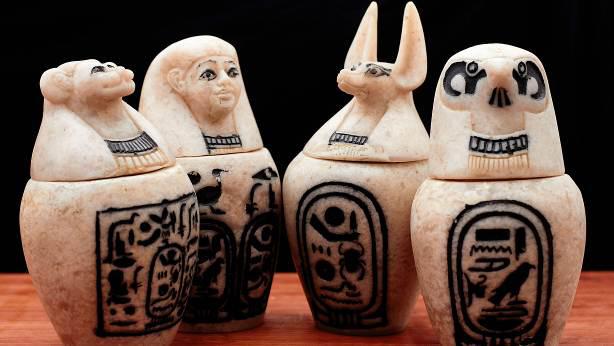
The Heart is the fifth organ that the Egyptians preserved. It was considered to be the seat of mystical intelligence and they kept it in the human mummy as opposed to placing it in a canopic jar. Being central in location to the four organs and acting as the medium of distribution among them all, its association with the Quintessence is easily understood.
It is these great powers of nature incarnated in biological organs that the formula of St. Germain seeks to restore and strengthen. According to Rosicrucian precepts, with a proper life-style and attitude, all physical functions of the body will be restored to harmony when these great organs are healthy and functioning properly.
We examine the individual organs and the related components in the formula.
intestines [qebehsenuf]
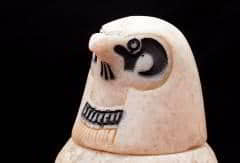

Intestines are the animal equivalent of plant roots. They assimilate nutrients into the bloodstream. They also are said to be the entry point of one polarity of the Vital Life Force into the bloodstream with the other polarity entering through the lungs. The intestines are also an important part of the immune system, neutralizing many harmful organisms and harbouring beneficial gut flora. The balance between harmful and beneficial organisms can be upset easily by constipation or dysfunctional elimination negatively impacting the immune system and the assimilation of nutrients. This is perhaps why laxatives have been prescribed historically to treat many conditions seemingly unrelated to the gastrointestinal organs themselves.
Senna is one of the best laxatives and is used as well for irritable bowel syndrome (IBS). Although both the pods and the leaves are used, the pods are known to be gentler in action than the leaves. A strong senna decoction can cause painful stomach convulsions so care must be taken with this plant. Alternatives to senna are aloe, rhubarb and castor oil (frequently recommended by Edgar Cayce).
stomach [duamutef]
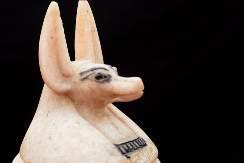
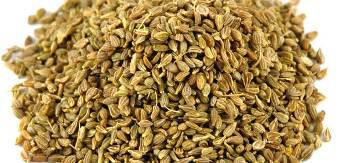
The Stomach is the animal kingdom's Earth substitute. Plants rely on the putrefying power of earth and soil to decompose matter for its absorption through the roots. The stomach serves a similar function by breaking down complex matter into nutrients absorbable by the intestines. Metaphorically (and mystically) the stomach is an internalized earth that freed the animal from physical attachment to the putrefying plant soil. A poorly functional stomach will not break down food to absorbable nutrients. This can cause indigestion and potential complications in the liver and intestinal functions. Of course, the demarcation of function and organ is not very clear-cut in higher forms of life as we can see that the breaking down of food starts with the mouth and ends somewhere in intestinal microflora. However, we consider it part of the stomach more functionally rather than mechanically.
Anise is the de facto Mediterranean herbal cure and rejuvenator for stomach and digestive functions. As a medicinal plant, anise has been used as an antibacterial, an antimicrobial, an antiseptic, an antispasmodic, a breath freshener, a carminative, a diaphoretic, a digestive aid, a diuretic, an expectorant, a mild estrogenic, a mild muscle relaxant, a parasiticide, a stimulant, and a stomachic. It is the herb used to make the Levantine Araq as well as the Greek Ouzo. It is used for its carminative effect and to aid digestion. Alternatives to anise include fennel seeds and anise flowers.
liver [imsety]
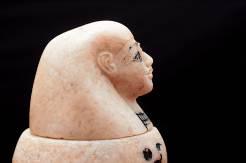
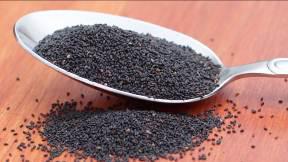
The Liver is the body's banking system. It stores, transforms, purifies and detoxifies the chemical balance of the animal body. It releases alkaline bile which is stored in the gall bladder and is vital to digestion. It stores sugars and iron, and converts toxins into less harmful forms (such as ammonia to urea). It concentrates the essence of the nutrients consumed and thus contains the physical "Sulphur" of its animal.
In the formula, we find fennel flowers. What is meant here is black coriander (Nigella sativa) not fennel seeds (which are similar in function to Anise seeds). Fennel flowers are a legendary herbal medicine that has been revered all over the world for its rejuvenating properties. From its finding in the tomb of Tutankhamun throughout its reverence in Islamic culture and modern-day use in herbalism and pharmacology, it is known to be an effective cure against dyslipidemia (known to be associated with fatty liver disease) and to protect against hepatotoxicity. Fennel flowers are the best ancient healers of the liver. This gives us compelling evidence that the use of fennel seeds (for example in Fenners Formulary) is not in line with the spirit of the formula of St. Germain but rather fennel flowers or Nigella sativa is the herb in consideration. Another herb known to have positive effects on the liver is milk thistle which was described first by Pliny the Elder as a remedy for liver and bile disorders and which is used to this day in modern medicine for hepatic toxicity. Milk thistle however favours strong alcoholic menstruums to extract its essence.
lungs [hapi]
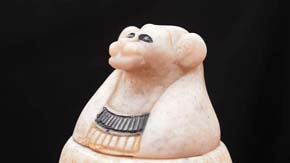
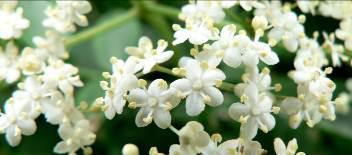
The Lungs assimilate air and expel carbon dioxide or waste air. Not only do the lungs transport oxygen and carbon dioxide but the carbon dioxide plays a role in maintaining the pH balance of the blood. The relationship between the lungs and the bloodstream runs much deeper in Rosicrucian philosophy since it is through the lungs that one polarity of the Vital Life Force enters the body, through the air element. It is the breath of life that animates the body and makes a man a living soul.
If we look at the St. Germain's formula, we find Elder flowers which are known to be an excellent remedy for treating the flu, alleviating allergies and boosting overall respiratory health. One of nature's strongest antivirals and rich in vitamin C, it has a reputation as an excellent remedy for asthma. It has been used in times past to treat bronchial and pulmonary affections. It was known to Ancient Egyptians who used it for cosmetic purposes as well.
heart [ib]

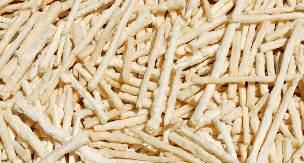
With four in place, the fifth ingredient will always be related to the heart and the circulatory system. The heart circulates nutrients and Vital Life Force as well as being a key rhythm generator in the body. It was considered by the Egyptians to be the seat of the mystical synthesizing intelligence. It is the Quintessence related additive. The heart was the fifth organ to be preserved but usually inside the mummified body. The Manna specified in the AMORC formula is the sap of the flowering European Ash, Fraxinus ornus, which grows natively in neighbouring Mount Lebanon. Ancient Egyptians imported many kind of woods from Lebanon including Cedar and Ashwood (which was used in furniture). The Ash Manna is known to be an effective antihyperglycemic thus acting as a blood tonic. However other trees are potential candidates, such as mastic and Tamarisk manna. The point is that the sap of the plant has a similar functional identity as that of blood. In fact, resin producing plants are typically very hardy (have great survival power) and thrive in sunny conditions which, in turn, displays their functional affinity with the heart and the circulatory system. When Manna was difficult to obtain, the learned Orval Graves used Melissa as a substitute, a plant that Paracelsus considered to have the greatest amount of quintessence in the vegetable kingdom. This lends more support to the hypothesis that Manna in the formula is intended as a source of Quintessence.
other formulations
Another formula that claims a wide spectrum of health benefits is Swedish Bitters. The lore surrounding Swedish Bitters is as diverse as St. Germain tea and is also being advocated as a panacea and a great rejuvenative. With the philosophical considerations mentioned above, it is not hard to see that Swedish Bitters follows the same basic principles of detoxifying and rejuvenating the five powers of the human body. As for the formula, it seems to be a mix of St. Germain tea plus the Elixir Proprietatis of Paracelsus (Aloe, Myrrh and Saffron) along with other herbs of similar functions:
- 10 g - Aloe
- 5 g - Myrrh
- 0.2 g - Saffron
- 10 g - Senna leaves
- 10 g - Camphor (natural, white)
- 10 g - Rhubarb roots
- 10 g - Manna
- 10 g - Theriac Venetian
- 5 g - Carline Thistle roots
- 10 g - Angelica roots
- 10 g - Zedoary roots
It should be clear from the philosophical considerations above that Swedish Bitters do not work on diseases directly but by the detoxification and restoration of the natural function of the assimilative and eliminative organs. The body's natural healing power will do its own magic if given the proper conditions and the proper conditions begin with a healthy and harmonious system.
This is a diverse topic and one can look at much research both legitimate and anecdotal about the healing powers of certain detoxifying medical or herbal preparations. In fact, AMORC students will remember the relentless, seemingly obsessive, warnings about constipation and its dire consequences; but, they have a point that is being proven further today as a more holistic view of medicine emerges.
It is not difficult to see that the foundation of a healthy body relies heavily on the proper functioning of these great organs. In Rosicrucian teachings, a holistic medicine is one that integrates the rejuvenation and detoxification of all these vital functions and organs. An obstruction in the intestines, such as constipation, is a paramount health risk not only because of the negative effects of constipation on the intestines locally but because the proper functioning of the stomach and liver will be hindered if the elimination function is diseased. If bowel movements are not regular, the waste products and toxins accumulate in the body and can compromise our overall health. Some of the waste is transported to the intestines via the lacteals, that part of the lymph system which empties into the small intestines; it then passes into the large intestine for elimination.
proper use of the formula
The complete process of healing with these elixirs and formulae always starts with the intestines. It is widely believed that the detoxification process takes place in a sequence in the body. Liver detox is incomplete at best, or ineffective at worse, if the intestines are dysfunctional or slow since most elimination will take place through the intestinal tract. But once the intestines are clear, the stomach is the next organ to be rebalanced, followed by the liver. Liver detox can be tiring and produces foul body odours but that quickly goes away. Next come the lungs, which release their toxins through the bloodstream and are processed by the liver.
This sequence must be taken into consideration when using the rejuvenating elixirs. One drink of an elixir will not do much and this is the reason why the formula of the tea is widely misused and mistrusted. We are so entrenched in "quick fix" schemes that we fail to utilize the simplest of medicines to their full effect. We know how an antibiotics course needs to be completed fully to avoid relapses and other dangers. The Elixirs of Longevity are no different. They need to be taken for a full course to work through the entire system completely. An excellent recommendation is made by Swedish Bitters literature where users are instructed to use the preparation for at least 3 weeks. In the case of the bitters in alcoholic preparation, the recommended dosing is a teaspoon of Bitters in a cup of warm water and ingested twice a day for 3-4 weeks. With St. Germain's water-based formula, we would recommend the same regimen and with the same precautions (pregnancy and/or hypertension require doctor's consultation), especially with any formulations containing boiled senna. In addition, we add that during the 3 weeks of detox, all food preparation should be kept simple and that sugar, caffeine, salt, oils, spices and, in general, strong "sulfurs" are kept to a minimum. Water should be administered in amounts of about 2-3 litres per day.
conclusion
In the end, we see how a mind attuned to, and aware of, the powers of Nature can devise a great medicine from the simplest of materials available. Whether the original formula of St Germain's Elixir was as quoted above or different in formulation or preparation, with our philosophical principles and laboratory dexterity, we can devise formulations just as potent and effective as the legendary elixirs of the past Masters of Wisdom and also know how to use them properly for maximum effect.
